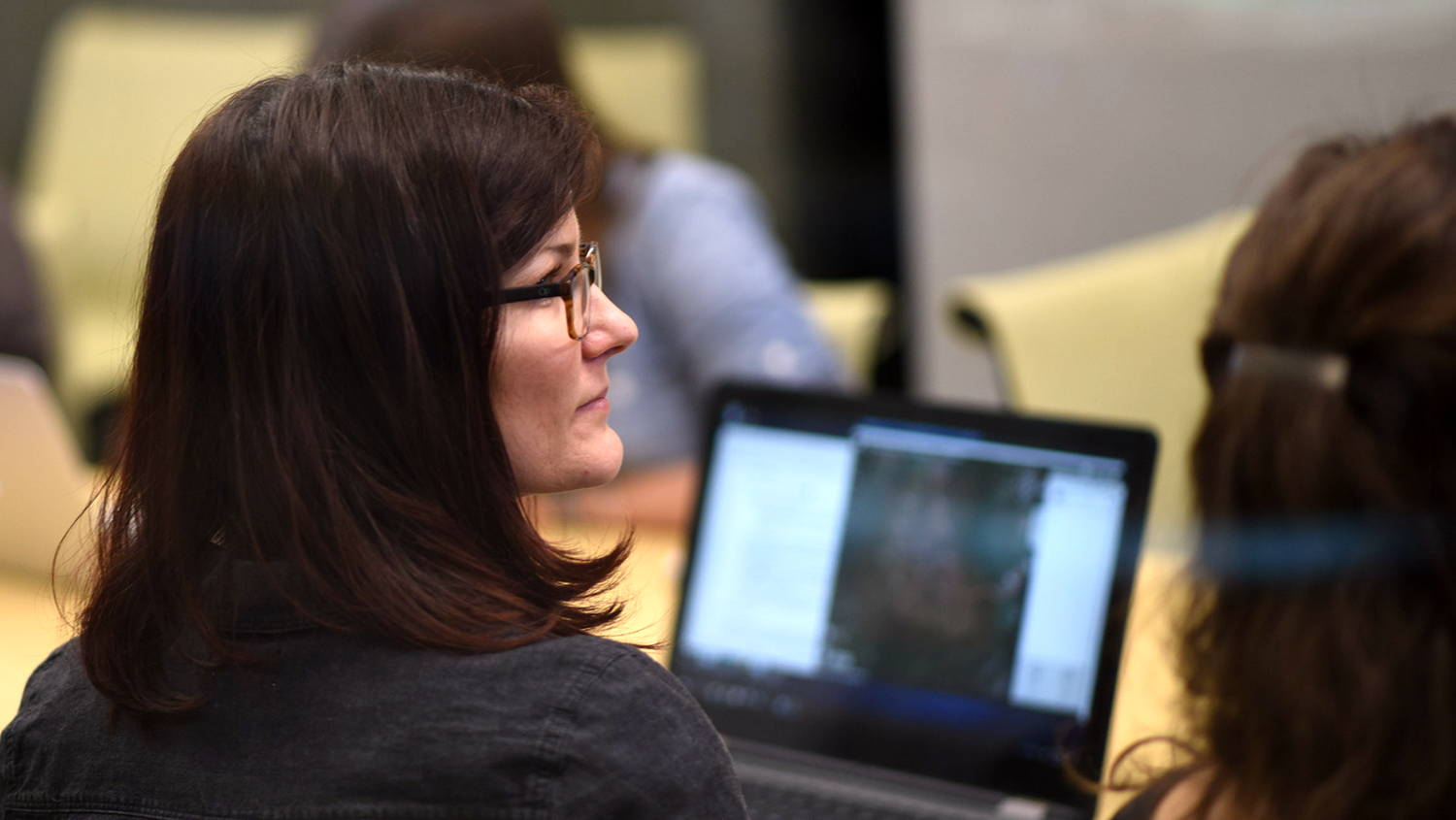A Focus on Geospatial Ethics

Guest speakers from around the Triangle area of North Carolina visited the Center for Geospatial Analytics on Monday to participate in the first Geospatial Ethics Panel discussion for the center’s Master of Geospatial Information Science and Technology (MGIST) program. The discussion took place during GIS 501: Geospatial Professionalism, a two-credit, eight-week course foundational to the master’s program and graduate certificate in GIS. The course is taught by Eric Money, the center’s associate director of professional education and director of graduate programs for online learning.
“GIS 501 covers a range of topics critical to successfully navigating the geospatial profession,” says Dr. Money. “And students have typically examined readings and case studies as part of it. But as GIS technology continues to advance, and becomes integral to so many more fields, I felt it was important for students to hear from experienced professionals themselves—about the ethical, legal, and social implications, what we call ELSI, of using spatial data in the real world.”
The panelists represented a range of sectors, from nonprofit to county government to regional planning, and discussed research, data and professional ethics issues that can arise for geospatial professionals. The 29 students in the class, both on campus and online, asked panelists questions related to data privacy concerns, crowdsourced data and the biggest ethical conundrums that the panelists have encountered in their careers.
What sorts of advice did the panelists give?
Perhaps most resonating was the call to remain dedicated to presenting accurate information as faithfully as possible, despite questionable requests, including from people in positions of power.
Jovian Sackett, a Senior Geospatial Analyst with the Southern Environmental Law Center, challenged students to consider, as they enter the workforce: “Where does your organization’s money come from, and can you do what you want to do, what you think is right?” Regarding encountering questionable work requests, he recommended “building your own good sense over years of working to say ‘no’ on something.”
The panelists also mentioned that maps can convey different messages by the way they’re designed, and professionals must be aware and careful of that fact. Even the colors on maps can give certain impressions, and so students may have to rethink color schemes to not mislead or leave out audiences that may be colorblind.
In answer to a question about communicating errors associated with data, Sallie Vaughn, GIS Manager for Person County, NC, cautioned, “Nothing leaves my office without a disclaimer. Having said that, I have [seen] the disclaimers trimmed off and [seen] maps printed on the front page of the paper that were not for public consumption. So just be aware that everything you let out of your hands could wind up on the front page of the paper or on WRAL or whatever. And that’s a tough one.”
The panelists also emphasized the importance of knowing and serving the audiences of their work. In the rural county where Vaughn works, the population is aging and many do not have internet access. “Know that GIS is inherently biased,” she said, “in that it is technology-based and not all of your constituents are going to be able to absorb that technology or even understand what they’re looking at. There’s a lot of map illiteracy.”
Over the hour-long class, the discussion covered many ethical concerns that will serve students well to remember as they progress through the rest of their geospatial education and careers. “It was a great experience,” says Dr. Money. “Having seen how the students responded, I plan to continue inviting panelists in future semesters.”
- Categories:


